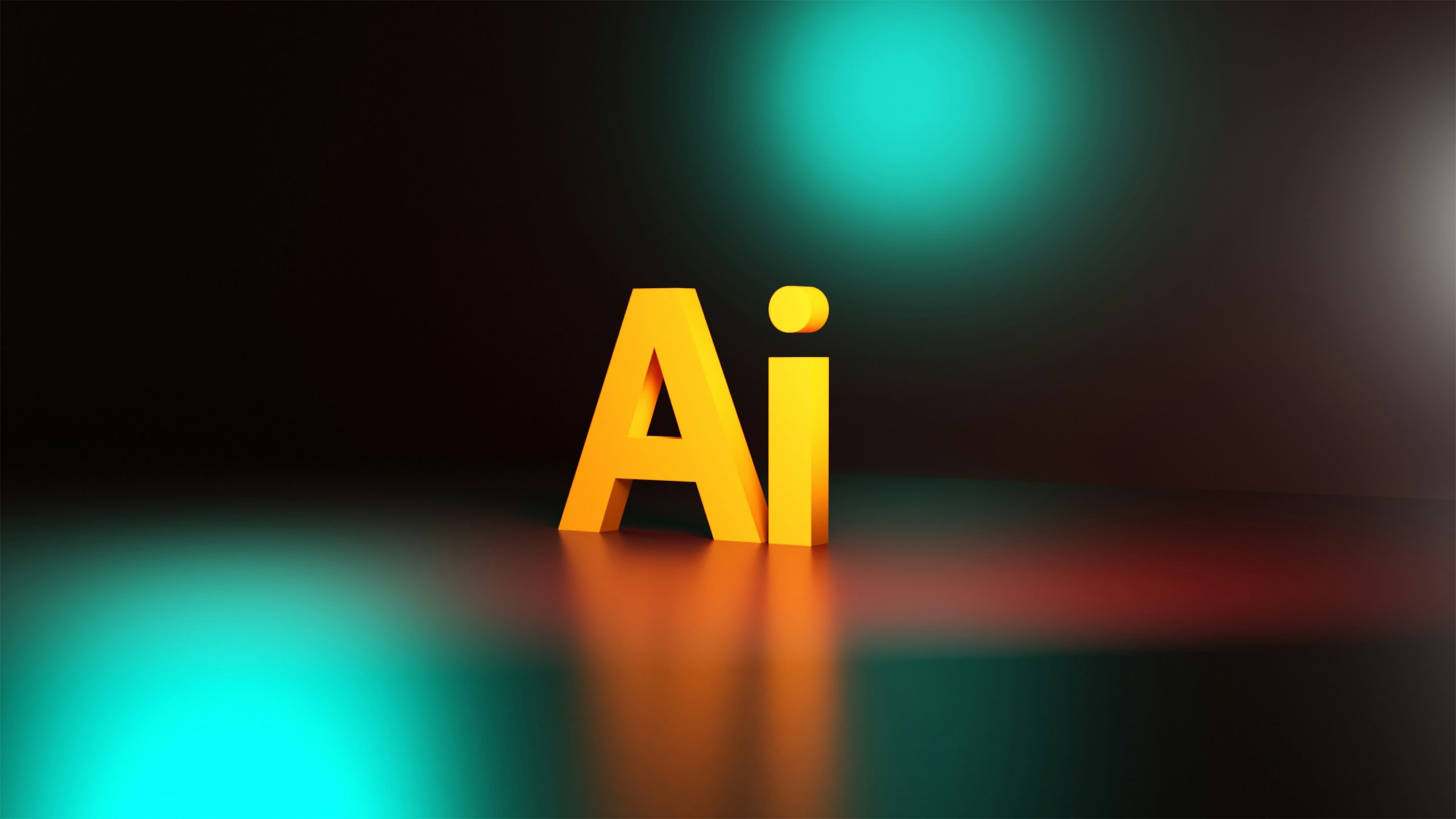Generative artificial intelligence has emerged as a transformative force in technology, revolutionizing how we create and interact with digital content. This article delves into the essence of generative AI, exploring its workings, types, benefits, limitations, and ethical considerations. We will also examine its application in marketing, compare it to other AI types, and look into the future of this fascinating technology.
What is generative AI (generative artificial intelligence)?
Generative artificial intelligence (Generative AI, or GenAI for short) is a rapidly evolving field of artificial intelligence that has the potential to revolutionize the way we create and interact with digital content. It refers to a subset of artificial intelligence that can generate new content, such as text, images, audio, and video, from learned data patterns. Unlike traditional AI, which primarily focuses on recognizing patterns and making predictions based on existing data, generative AI creates novel content that mimics human-like creativity.
How does generative AI work?
Generative AI operates through complex algorithms and models that learn from large datasets. The primary technique involves training neural networks on these datasets to understand the underlying structures and patterns.
Key models used in generative AI include generative adversarial networks (GANs), variational autoencoders (VAEs), and transformer-based models. These models employ advanced machine learning techniques to generate new, realistic content.
Key components:
- training data: massive datasets are used to train generative AI models, enabling them to learn diverse patterns
- neural networks: deep learning neural networks, such as GANs and transformers, play a crucial role in generating content
- algorithms: sophisticated algorithms guide the generation process, ensuring the output is coherent and contextually relevant
The process of generative artificial intelligence typically includes the following steps:
- Data Input: the AI model is fed large datasets relevant to the desired output
- Training: the model learns patterns, structures, and relationships within the data
- Generation: using the learned patterns, the model creates new content when prompted
- Refinement: the output is often refined through multiple iterations to improve quality
Types of generative AI
There are a number of different types of generative AI, each of which is specialized for a particular type of data. Some of the most common types of generative AI include:
- text generators: text generators can be used to create a variety of different types of text, including news articles, blog posts, and even creative writing
- image generators: image generators can be used to create realistic images of people, places, and objects
- video generators: video generators can be used to create short videos, such as looping animations or advertisements
- voice generators: voice generators can be used to create realistic-sounding human voices
- content personalization: content personalization can be used to create personalized content for each individual user, such as product recommendations or news feeds
Benefits of generative AI
Generative artificial intelligence has the potential to offer a number of benefits to businesses, including:
- increased creativity: generative AI can be used to generate new ideas and concepts that would not be possible for humans to come up with on their own
- improved efficiency: generative AI can be used to automate tasks that are currently done by humans, such as creating marketing materials or generating reports
- reduced costs: generative AI can help businesses to reduce costs by automating tasks and improving efficiency
- enhanced customer experiences: generative AI can be used to create personalized content and experiences for each individual customer
- personalization: generative AI enables personalized experiences, tailoring content to individual preferences, which can enhance customer satisfaction and engagement.
- innovation: in marketing, for instance, generative AI can create targeted campaigns, generate personalized advertisements, and improve customer interactions through chatbots and virtual assistants
- scalability: generative AI enables the production of large volumes of content quickly
- rapid prototyping: in design and product development, generative AI can quickly produce multiple iterations and concepts
- data augmentation: AI can generate synthetic data to enhance training datasets for other AI models
Limitations and concerns of generative AI
Despite its potential benefits, generative artificial intelligence also has some limitations and as with any transformative technology, GenAI has sparked various concerns, including:
- bias and fairness: generative AI models can be biased, reflecting the biases of the data they were trained on. This can lead to the generation of content that is offensive or discriminatory
- lack of explainability: it can be difficult to understand how generative AI models make decisions, which can make it difficult to trust them
- potential for misuse: generative AI could be used to create deepfakes or other forms of synthetic media that could be used to impersonate people or spread misinformation
- quality inconsistency: outputs can vary in quality and may require human oversight
- lack of true understanding: while able to mimic patterns, AI doesn’t possess genuine comprehension or consciousness
- ethical concerns: generative AI can produce deepfakes and misleading content, raising ethical questions about authenticity and trust
- data dependency: generative AI models rely heavily on the quality and diversity of training data, which can impact their performance and generalizability
- copyright and ownership issues: the creation of AI-generated content raises complex legal and ethical questions
- resource intensity: training and running large AI models requires significant computational power and energy
- job displacement: generative AI could lead to job displacement, as it automates tasks that are currently done by humans
How can generative AI be used in marketing?
Generative artificial intelligence can be used in a number of ways in marketing, including:
- creating personalized marketing campaigns: generative AI can be used to create personalized marketing campaigns that are tailored to each individual customer’s needs and interests
- developing new creative content: generative AI can be used to develop new creative content, such as ad copy, product descriptions, or social media posts
- generating product recommendations: generative AI can be used to generate personalized product recommendations for each individual customer
- optimizing marketing campaigns: generative AI can be used to A/B test different marketing messages and creatives to see which ones perform best
- improving customer service: generative AI can be used to create chatbots that can answer customer questions and provide support
- data analysis: generative AI can analyze vast amounts of marketing data to uncover insights, optimize campaigns, and predict customer behavior
Generative AI in performance marketing
While generative AI can be a powerful tool for many marketing applications, it shines particularly bright in the world of performance marketing. Here’s how:
- personalized ad creation: generative AI can create personalized ad copy, landing pages, and social media posts based on individual user data and preferences. This level of personalization can significantly improve click-through rates and conversion rates
- A/B testing at scale: generative AI can be used to generate a vast number of variations for ad creatives and landing pages. This allows for A/B testing at an unprecedented scale, helping marketers identify the most effective messaging and design elements
- dynamic content optimization: generative AI can be used to optimize website content and product descriptions in real-time based on user behavior. This ensures that users are always presented with the most relevant and engaging content
- chatbot marketing: generative AI can power chatbots that can answer customer questions, provide support, and even qualify leads. This can improve customer experience and lead generation
- programmatic ad buying: generative AI can be used to automate the process of buying and optimizing ad placements, leading to more efficient and effective media buying
Overall, generative artificial intelligence offers a wealth of opportunities to improve the effectiveness and efficiency of performance marketing campaigns.
Generative AI vs. traditional AI
Traditional AI systems are typically rule-based or statistical in nature. They are trained on a dataset of data and then programmed to identify patterns and relationships in that data. Once they have identified these patterns, they can be used to make predictions or decisions.
In contrast, generative AI models are not programmed with any specific rules or relationships. Instead, they learn the underlying patterns in data by themselves. This allows them to generate new data that is similar to the data they were trained on, but not identical to it.
Generative AI vs. predictive AI vs. conversational AI
There are a number of different subfields within artificial intelligence, and generative AI is just one of them. Here’s how generative artificial intelligence compares to two other relevant subfields:
- predictive artificial intelligence: predictive AI focuses on analyzing data to make predictions about future events. For instance, a predictive AI model might be used to predict which customers are most likely to churn from a service. While generative AI can be used to generate data that can then be used for predictive modeling, it’s not the core function of generative AI itself
- conversational artificial intelligence: conversational AI, also known as chatbot technology, focuses on creating chatbots that can interact with humans in a natural way. Generative AI can be used to power chatbots by generating human-like text for the chatbot to use in conversation. However, conversational AI is a broader field that also encompasses other techniques, such as natural language processing and machine learning
Generative AI models
The specific algorithms used to achieve generative AI fall under the umbrella of generative models. Here are some of the most common types:
- large language models (LLMs): LLMs are a type of neural network architecture that is particularly well-suited for natural language processing tasks. They can be used for tasks like generating text, translating languages, and writing different kinds of creative content
- diffusion models: diffusion models work by gradually adding noise to an image until it becomes completely random. Then, they learn to reverse this process, starting with the noisy image and generating a clean, realistic image
- generative adversarial networks (GANs): GANs consist of two competing neural networks: a generator and a discriminator. This competition helps the generator create increasingly realistic outputs
- variational autoencoders (VAEs): VAEs work by compressing data into a latent representation and then reconstructing the data from that representation. The latent space can be used to generate new data by sampling from it
Examples of generative AI models in marketing
Several generative artificial intelligence models are particularly relevant for marketing professionals:
- ChatGPT, Google Gemini, Claude 3.5, Microsoft Copilot: these large language models can assist with writing different creative text formats, like marketing copy, product descriptions, or social media posts, and also generating code, translating languages, and writing different kinds of creative content
- DALL-E 3, Midjourney: these powerful image generation models can be used to create product mockups, social media graphics, or even personalized marketing materials
Best practices for using generative AI
Generative AI is a powerful tool, but it’s important to use it responsibly and ethically. Here are some best practices to keep in mind:
- prioritize data quality: use high-quality, diverse datasets to train generative AI models for better performance and generalizability
- avoid bias: be mindful of the data your generative AI model is trained on, as biases can be reflected in the outputs. Monitor for bias in the generated content
- use human oversight: generative AI is a tool, not a replacement for human creativity and judgment. Human oversight is crucial for ensuring the quality, accuracy, and ethical implications of the generated content
- focus on quality: don’t prioritize speed over quality. Ensure the generated content is factually accurate, grammatically correct, and aligns with your brand voice
- respect intellectual property: ensure you have the rights to use any data or creative elements fed into the generative AI model to avoid copyright infringement
- be transparent: disclose when using generative AI-generated content. This builds trust with your audience and avoids any potential misunderstandings
- stay informed: keep up with the latest developments in AI technology
The future of generative AI
Generative AI is a rapidly evolving field with the potential to revolutionize the way we create and interact with content. Here are some potential future directions for generative AI:
- enhanced multimodal capabilities: seamless integration of text, image, and video generation
- improved contextual understanding: more nuanced and context-aware content creation
- ethical AI frameworks: development of robust guidelines for responsible AI use
- personalization at scale: highly tailored content for individual consumers
- creative collaboration: AI as a tool to augment human creativity rather than replace it
“Generative artificial intelligence models will continue to improve in their ability to generate realistic and creative content. GenAI will become more accessible and easier to use, leading to wider adoption across different industries. We can expect to see new and innovative applications of generative AI emerge in the future”
– says the Sembot expert.
Conclusion
In conclusion, generative AI is a transformative technology with the potential to reshape the way we create and interact with content. While there are challenges to address, such as bias and ethical considerations, the potential benefits for marketing and other fields are vast. As generative artificial intelligence continues to evolve, it will be exciting to see the new and innovative ways it is used to improve our lives.





